Oil Spill Cleanup
This demonstration serves to heighten awareness of environmental issues facing our society today, while at the same time exploring the unique properties of polymers. Polymers are very useful in environmental applications. One example is an experimental product called Enviro-Bond® polymer, which demonstrates how polymers are used to control and cleanup oil spills on our oceans. Other types of oil spill cleanup methods include collecting oil using pumps, burning it, using detergents to break up the oil and the use of polypropylene (another synthetic polymer!) booms to contain and absorb the oil from the ocean surface.
The following experiment demonstrates how the Enviro-Bond® 403 polymer works to clean up oil spills spread over a water surface. This polymer is a hydrocarbon polymer (oil-based) that contains a porous internal structure. The major components of oil are attracted to this polymer because their nature is quite similar. The polymer attracts and absorbs the oil within its pores, encapsulating it and preventing its release. Once the particles are "full" of oil, they adhere to one another and form a semi-solid mass that can be handled and disposed easier.
Enviro-Bond is ideally suited for water cleanup because it is hydrophobic (does not like water!), and its density is lower than the density of water, therefore the polymer particles float at the oil-water interface.
The experiment below illustrates the phenomenon described above. Be aware that while Enviro-Bond® 403 is a non-toxic material, it is however irritating to the eye. Always wear chemical splash goggles when using this material. The oil is also mildly irritating to the eyes and it is combustible. The gelled material should be recycled at an automotive service center. Keep it away from heat and open flame.
Supplies needed:
- Enviro-Bond® 403 powder (available from Flinn Scientific Inc.)
- Clear plastic cup
- Plastic spoon and fork
- Water
- Marvel Mystery Oil® (available from Flinn Scientific Inc.) or kerosene
- Paper plate
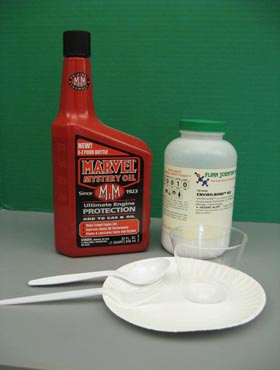
Procedure:
1. Fill half the plastic cup with tap water.
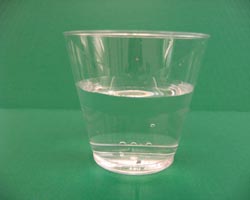
2. Pour a thin layer of oil in the plastic cup. Notice the oil and water separate, with the oil floating on top of the water.
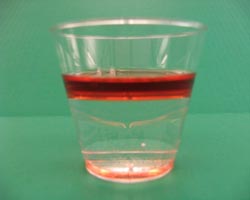
3. Using the plastic spoon, sprinkle enough Enviro-Bond® 403 on the "oil spill" in the cup. Watch the polymer particles absorb all the oil.
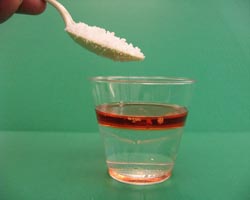
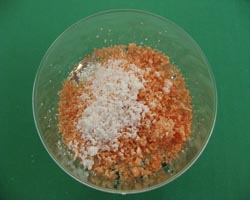
4. When all the oil has been absorbed (3-5 minutes), lift the polymer-oil cake from the surface of the water using the fork and place on the paper plate.
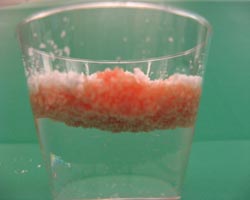
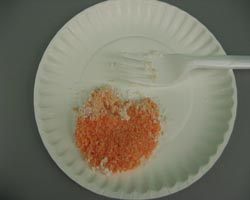
5. How does the water in the cup look? Is it clean? Was all of the oil removed?
6. You have successfully cleaned up your oil "spill"!
Even though this polymer absorbs oil, it is not considered a super-absorbing material. Super-absorbers must be capable of absorbing 25 times their weight in liquid in order to be classified as a super-absorber. Since Enviro-Bond® 403 does not meet this requirement, it is considered a "hydrocarbon stabilizer" instead. The absorbing power of this polymer can still be determined by weighing the polymer before and after it absorbs the oil. Use the equation given below.
